Summer 1947
Economic and Industrial Recovery
The atomic bomb that took their food, clothing, and shelter also destroyed the places where people worked to earn a living. Though black markets declined with tightened regulations, shortages of goods and rising prices continued little improvement, causing terrible suffering among residents who had lost their income.
In the meantime, the General Headquarters of the Allied Forces (GHQ) prohibited major factories in and around the city of Hiroshima from taking any action because the industrial equipment was to be used as reparations to the victorious nations. This action greatly impeded economic recovery.
Genuine recovery would require the reconstruction of factories and shops, restoration of production and distribution, and promotion of employment to give city residents a modicum of purchasing power.
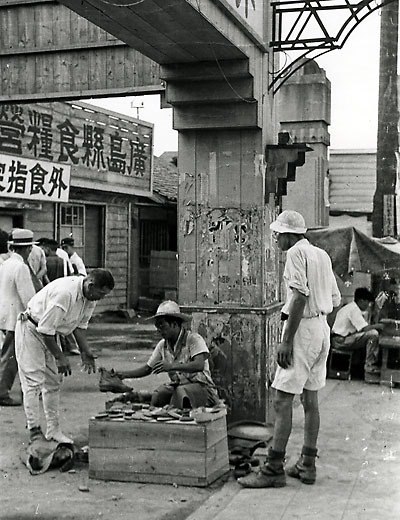 |
Transformation in front of Hiroshima Station |
|
| Shoe repairman Location: Matsubara-cho Starting in 1946 when regulations tightened, the black market in front of Hiroshima Station gradually shrunk and eventually transformed into a public market. Here is a man who repaired shoes at the entrance to the market. |
 Bus stop Location: Matsubara-cho This stop is for a bus heading toward Kaita and Yano. The buses were still small "bonnet" (cab-behind-engine) buses. In the background can be seen Hiroshima Station, where restoration work was continuing. |
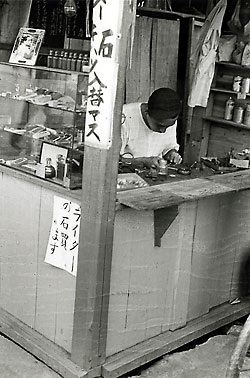 |
Palm reader Location: Matsubara-cho Fortune-teller reading palms near the market. Wondering how their lives will turn out in the future, the people surrounding this fortune-teller listen in complete seriousness. |
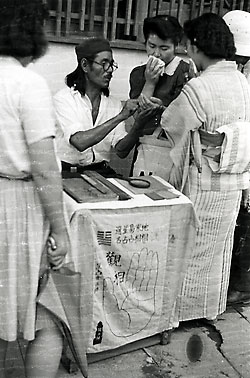 |
Resurgence of Local Industry |
||
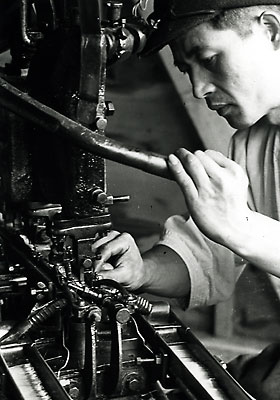 Aiming to recover the top spot in Japan Location: Kami-tenma-cho Even today, Hiroshima's needle industry boasts the nation's top share. In the background were the efforts of the people who quickly rebuilt the factory and resumed production after the bombing. From the eyes of the men working at the factory, you can sense the confidence and will to recover. |
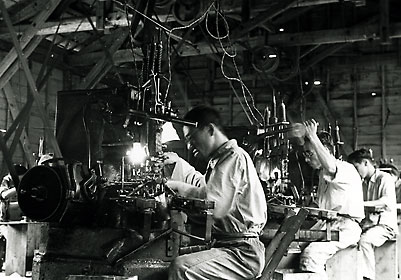 Needle factory Location: Kami-tenma-cho As a specializing manufacturer, this factory boasted the nation's largest production of hand sewing needles. When the factory resumed operations, its workers were able to once again demonstrate their excellent skills. |
|
| View from Hiroshima Chamber of Commerce and Industry
Location: Moto-machi
Panoramic photographs taken from a watchtower on the Hiroshima Chamber of Commerce and Industry (then, Hiroshima Prefectural Commerce Association) with the A-bomb Dome to the south at the center.
|
||
